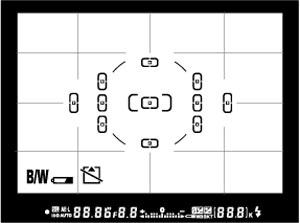Nikon D80 review
-
-
Written by Gordon Laing
Nikon D80 lenses
Nikon D80 features continued…
Lenses / Screen and menus / Sensor and processing
The Nikon D80 has an F-mount which can accommodate most Nikkor lenses, although older models may not support all the exposure or metering features. The D80’s DX format sensor results in the field of view of all lenses being reduced by 1.5 times, so the DX 18-55mm, DX 18-70mm and DX 18-135mm kit lenses deliver effective focal lengths of 27-83mm, 27-105mm and 27-203mm respectively. The range of the DX 18-70mm in practice is shown below, and like Sony’s kit lens, the range is much more flexible than the standard Canon bundle.
As mentioned above, the D80 is typically available in a choice of three different lens bundles with either the DX 18-55mm, DX 18-70mm or DX 18-135mm. To see how these three lenses compare alongside the popular DX 18-200mm VR, check out our Nikkor kit lens group test which also includes a video tour around all four models. The DX 18-200mm VR is a particularly popular option for the D80, so to find out more, check out our Nikkor 18-200mm review.
| ||||||||||||||
 |
The 11 focusing points are shown as tiny squares in the viewfinder and like the D200 become outlined or illuminated red when active. And along with being able to manually select any point, you can switch the center focus area from normal to wide frame. It’s a classy system both in looks and operation which is ahead of its rivals.
Following earlier Nikon digital SLRs, a number of items can also be optionally overlaid on the main viewfinder frame itself. Like the D200, there’s an indicator in the lower left corner for Black and White mode, along with icons indicating low battery and card not present; all three can be disabled using a custom function if required.
Again like the D200 and D70(s), there’s also a custom menu function to overlay a three-by-three grid, which can greatly aid composition; this is a feature we’re very fond of at Cameralabs and would like to see on every digital SLR. It makes the physical swapping of a focusing screen (as required with higher-end Canon bodies) seem quite prehistoric, not to mention expensive. And remember you don’t even get the option to switch screens on cheaper Canon bodies like the 400D / XTi or 30D.
Information running along the bottom of the main frame includes shutter speed, aperture, exposure compensation scale, indicators for focus, flash value, AE lock, Auto ISO mode, low battery, flash compensation, bracketing, flash ready and shots remaining. Sadly there’s no ISO value shown in the viewfinder at all times though, even when the ISO button’s pressed; so beware if you’re the kind of person who shoots at high ISOs in the evening but forgets to reduce it before shooting under normal conditions the following day. The D200’s viewfinder impressively shows ISO, exposure and metering modes at all times. To be fair, the D80’s programmable Function button to the right side of the lens is set by default to display the ISO in the viewfinder when pressed, but it would still be nice to have it shown at all times.
Ultimately the D80’s entire viewfinder experience, from the large bright view to the overlaid graphics and 11-point AF system is not only far superior to the Canon 400D / XTi and Sony A100, but also better than products like Canon’s EOS 30D and 5D. If it also always showed the ISO value, it’d be almost perfect.








